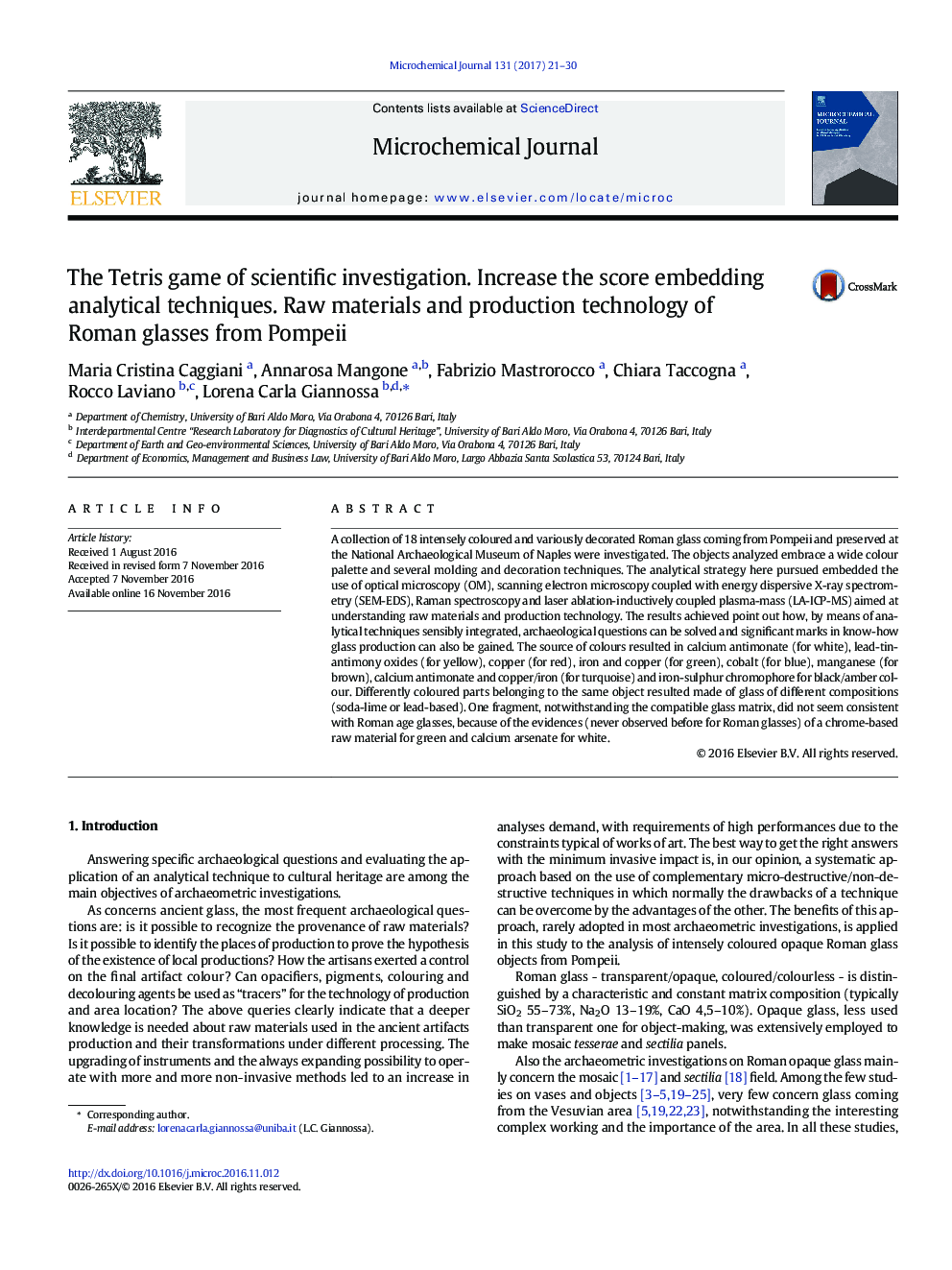| Article ID | Journal | Published Year | Pages | File Type |
|---|---|---|---|---|
| 5139251 | Microchemical Journal | 2017 | 10 Pages |
Abstract
A collection of 18 intensely coloured and variously decorated Roman glass coming from Pompeii and preserved at the National Archaeological Museum of Naples were investigated. The objects analyzed embrace a wide colour palette and several molding and decoration techniques. The analytical strategy here pursued embedded the use of optical microscopy (OM), scanning electron microscopy coupled with energy dispersive X-ray spectrometry (SEM-EDS), Raman spectroscopy and laser ablation-inductively coupled plasma-mass (LA-ICP-MS) aimed at understanding raw materials and production technology. The results achieved point out how, by means of analytical techniques sensibly integrated, archaeological questions can be solved and significant marks in know-how glass production can also be gained. The source of colours resulted in calcium antimonate (for white), lead-tin-antimony oxides (for yellow), copper (for red), iron and copper (for green), cobalt (for blue), manganese (for brown), calcium antimonate and copper/iron (for turquoise) and iron-sulphur chromophore for black/amber colour. Differently coloured parts belonging to the same object resulted made of glass of different compositions (soda-lime or lead-based). One fragment, notwithstanding the compatible glass matrix, did not seem consistent with Roman age glasses, because of the evidences (never observed before for Roman glasses) of a chrome-based raw material for green and calcium arsenate for white.
Related Topics
Physical Sciences and Engineering
Chemistry
Analytical Chemistry
Authors
Maria Cristina Caggiani, Annarosa Mangone, Fabrizio Mastrorocco, Chiara Taccogna, Rocco Laviano, Lorena Carla Giannossa,
